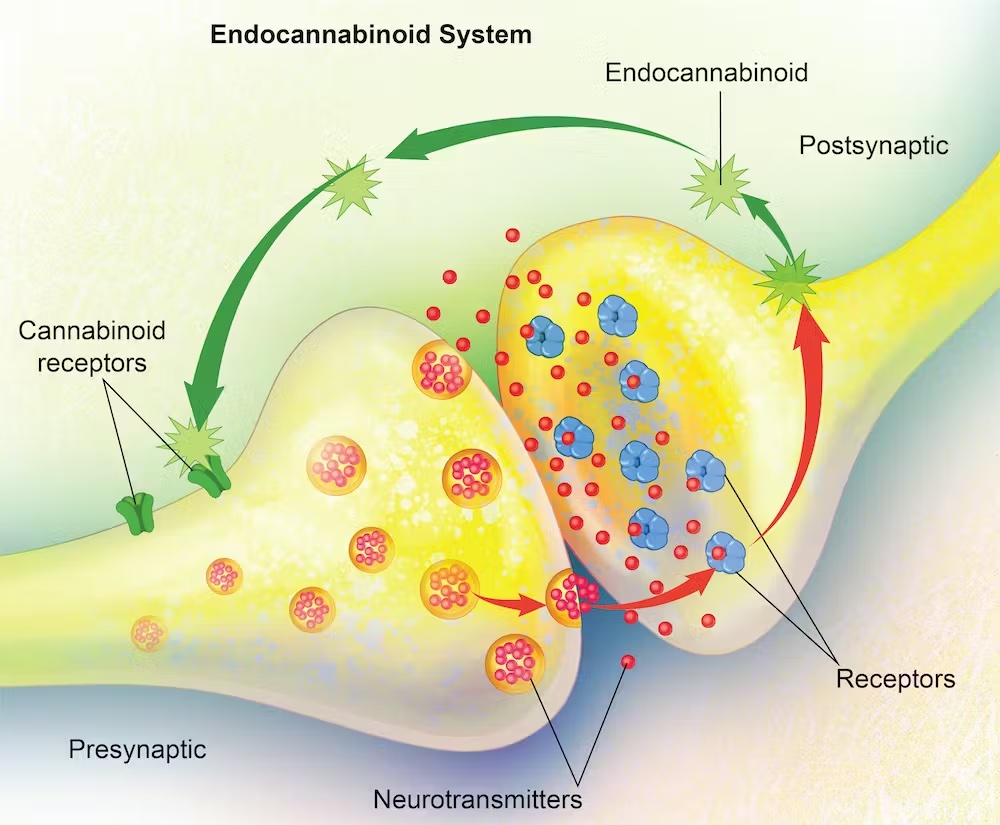

By Caribborida Certified Ganjier
The endocannabinoid system (ECS) and endocannabinoids are related components of the human body, but they serve different functions and have distinct roles:
- Endocannabinoid System (ECS):
- The ECS is a complex physiological system found in the bodies of mammals, including humans.
- It consists of three main components: endocannabinoid receptors, endocannabinoids, and enzymes.
- The primary function of the ECS is to regulate various processes in the body, including mood, pain sensation, appetite, immune function, sleep, and more.
- There are two main types of endocannabinoid receptors: CB1 receptors, primarily found in the brain and nervous system, and CB2 receptors, which are mainly present in immune cells and peripheral tissues.
- The ECS helps maintain homeostasis, which is the body’s internal balance, by responding to external and internal stimuli.
- Endocannabinoids:
- Endocannabinoids are naturally occurring compounds produced by the body. The prefix “endo-” means “within,” indicating that these compounds are produced internally.
- The two most well-known endocannabinoids are anandamide (AEA) and 2-arachidonoylglycerol (2-AG).
- Endocannabinoids are lipid-based molecules that are synthesized on-demand in response to specific physiological signals.
- They act as signaling molecules and bind to cannabinoid receptors (CB1 and CB2) in the ECS to transmit messages that regulate various bodily functions.
- Endocannabinoids are rapidly broken down by enzymes (e.g., fatty acid amide hydrolase for anandamide and monoacylglycerol lipase for 2-AG) once they have completed their signaling role.
In summary, the endocannabinoid system is a complex regulatory system in the human body, while endocannabinoids are the specific signaling molecules produced within the body that interact with the ECS to help maintain homeostasis and regulate various physiological processes. The ECS relies on endocannabinoids to transmit messages and modulate responses to external and internal stimuli.

